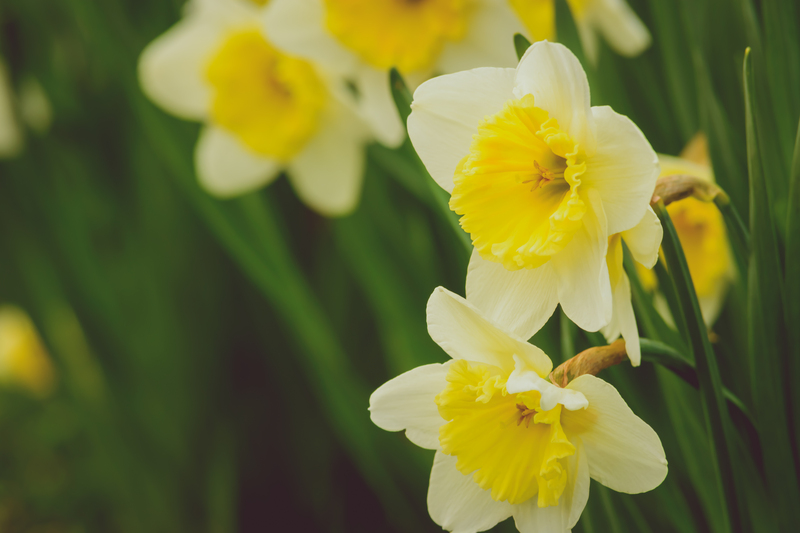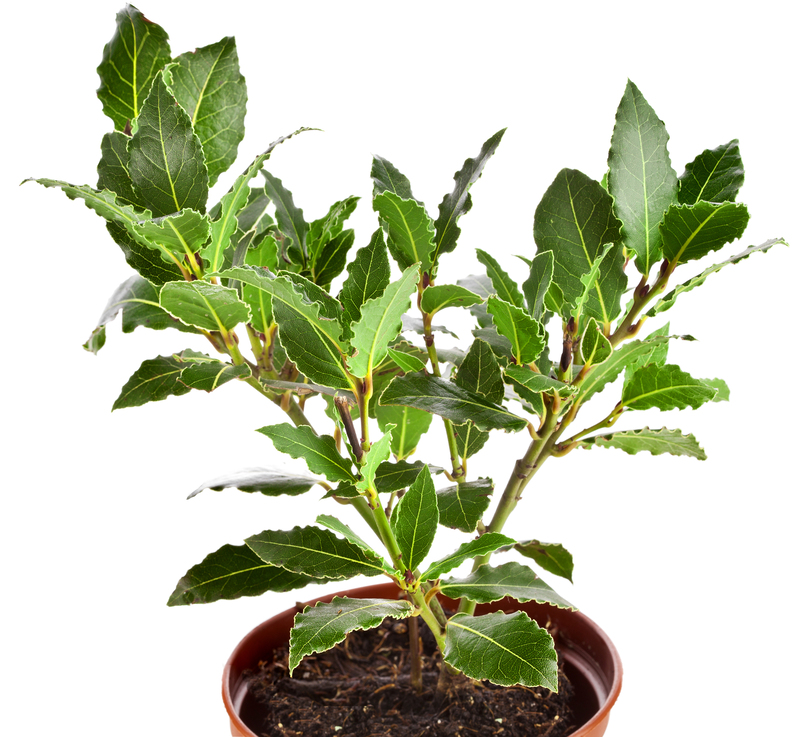Nature's Classroom: Child-Friendly Gardens Simplified
Posted on 18/06/2025
Nature's Classroom: Child-Friendly Gardens Simplified
Looking for a way to inspire curiosity, hands-on learning, and a love of the outdoors in your children? Nature's Classroom--child-friendly gardens--offer endless opportunities for young minds to flourish. In this comprehensive guide, discover everything you need to know to design, cultivate, and enjoy a safe garden space for children. We'll explore creative ideas, essential tips, and practical advice to help you simplify the process and make outdoor learning accessible for every family.

Why Gardens Are the Ultimate Learning Space for Kids
It's no secret that children thrive when they're connected to nature. Outdoor learning gardens provide far more than just pretty flowers and vegetables. They serve as vibrant, interactive classrooms where science, art, math, and social skills come alive.
- Hands-on Discovery: Kids actively engage with soil, plants, insects, and weather.
- STEM Learning: Garden-based activities reinforce science, math, and measurement skills.
- Life Skills: From patience to problem solving, gardening nurtures essential abilities.
- Emotional Well-being: Studies show time outdoors reduces stress and increases happiness in children.
- Physical Health: Gardening encourages movement and healthy eating habits by growing fresh produce.
Child-friendly gardens are, in effect, nature's classrooms--places where curiosity is rewarded and education feels like play. By simplifying the design and setup process, you'll empower your kids to grow and explore right at home.
Benefits of Nature's Classroom for Children
- Boosts Creativity: Open-ended play and plant care inspire imagination.
- Encourages Teamwork: Working together on garden projects strengthens social bonds.
- Develops Responsibility: Regular garden tasks teach children to care for living things.
- Connects with Core Curriculum: Reading garden signs, measuring plants, and observing life cycles all reinforce classroom learning.
Designing a Child-Friendly Garden: Simplified Steps
You don't need a sprawling backyard or extensive gardening knowledge to create a child-safe, engaging outdoor classroom. Follow these simple steps to get started.
1. Choose the Right Location
- Visibility: Select a spot where you can easily supervise children at play.
- Accessibility: Ensure there's a clear, safe path from your home to the garden.
- Sunlight: Most edible plants need 6-8 hours of sun; shaded zones are perfect for quiet play areas.
- Safety First: Avoid areas near poisonous plants, thorny bushes, or potential hazards.
2. Plan with Children's Input
- Involve your children in choosing plants, designing spaces, and setting goals for their garden.
- Ask what they'd like to grow or create--veggie patches, butterfly gardens, or hidden fairy corners?
3. Embrace Simplicity in Design
Start small with raised beds or container gardens. Simplified layouts--like sensory gardens or themed beds--are easy to manage and fun for kids. Use clear, bold paths to define boundaries and facilitate navigation.
- Pathways: Use mulch or stepping stones for safe, mud-free access.
- Mini Zones: Create small 'rooms' for different activities--digging, planting, relaxing, or playing.
- Seating: Add logs, stumps, or colorful benches for rest or observation.
Essential Features of Child-Friendly Gardens
To keep your nature classroom safe and enjoyable for kids, consider these must-have features:
1. Safety Comes First
- Non-toxic Plants: Avoid poisonous or allergenic species.
- Protective Boundaries: Fencing or borders prevent wandering and keep pets out.
- Shade Structures: Pergolas, trees, or shade sails protect from sunburn.
- Bug and Animal Safety: Check for wasp nests, ant hills, and ensure safe compost bins.
2. Interactive Play Areas
- Dirt Digging Zone: Designate a patch for free digging and play.
- Water Play: Add a small water table or birdbath for safe water exploration.
- Climbing Elements: Include logs, safe rocks, or a mini climbing frame.
- Art Corner: Supply outdoor-friendly art materials like chalks and paints to encourage creativity.
3. Sensory-Rich Plantings
- Texture: Fuzzy lamb's ear, soft moss, and crunchy grasses provide tactile experiences.
- Fragrance: Herbs like mint, basil, and lavender stimulate the sense of smell.
- Color: Bright blooms and leaves captivate young eyes and introduce color recognition.
- Sound: Rustling bamboo, wind chimes, and grasses add soothing garden sounds.
The Best Plants for Child-Safe Outdoor Classrooms
Choosing the right plants is crucial in any garden for children. Focus on edible, non-toxic, and easy-to-grow varieties that match your climate and soil. Below are favorites for nature's classroom gardens:
- Sunflowers: Tall, cheerful, and easy for kids to plant independently.
- Cherry Tomatoes: Bite-sized, sweet, and fun to harvest.
- Strawberries: Low-growing and rewarding for little pickers.
- Snapdragons: Colorful, interactive flowers kids love to squeeze.
- Mint and Basil: Fast-growing, fragrant, and perfect for sensory engagement.
- Pumpkins: Great for teaching patience--watch them grow and harvest in the fall!
- Bean Teepees: Create living tents and climbing structures for imaginative play.
Always double-check plant safety for your region, and avoid mushrooms, foxglove, or oleander, which are best left out of children's gardens.
Easy, Educational Activities for Nature's Outdoor Classroom
A child-friendly garden isn't just about what you plant--it's about creating moments for wonder and learning. Try incorporating these simple nature-focused activities:
- Mini Nature Journals: Encourage children to record animal sightings, weather changes, and plant growth.
- Scavenger Hunts: List colors, textures, and critters for kids to find each week.
- Garden Art: Leaf rubbings, mud painting, and fairy house building tap into creativity.
- Compost Experiments: Learn about decomposition by starting a kid-friendly compost bin.
- Plant Life Cycle Observations: Watch seeds germinate and note changes from sprout to flower.
Integrating garden-based learning into your routine adds depth and variety to the nature classroom experience. Simple, hands-on activities make science, math, and art lessons memorable and fun.
Maintaining a Child-Friendly Garden Made Simple
Keeping a safe and thriving kids' garden doesn't need to be overwhelming. Follow these maintenance recommendations to enjoy a flourishing, low-stress outdoor space year-round.
- Mulch for Low Maintenance: Apply a thick layer of mulch to suppress weeds and retain soil moisture, reducing the need for frequent watering.
- Choose Perennials: Select plants that return each year to simplify replanting.
- Embrace Imperfection: Allow some "mess"--a few weedy patches attract pollinators and add biodiversity.
- Set Realistic Goals: Start small and expand as your confidence (and your children's interest!) grows.
- Safe Storage: Keep tools, chemicals, and fertilizers locked away or out of reach.
Incorporating Nature's Classroom Gardens in Schools and Communities
The movement towards outdoor classrooms and nature-based education is growing fast. Schools, community centers, and local parks are creating nature's classroom gardens to nurture healthy, inquisitive young minds. Here's what you can do in your broader community:
- Volunteer for School Gardens: Offer your time and expertise to help set up or maintain schoolyard green spaces.
- Join Community Gardens: Community plots foster teamwork, cultural exchange, and intergenerational learning.
- Advocate for Local Funding: Encourage local councils to support child-friendly nature spaces for all.
Gardens built with children in mind help entire communities blossom. They break down barriers and sow seeds of curiosity, cooperation, and environmental stewardship.
Common Challenges and Simple Solutions
Every garden faces obstacles, but with the right strategies your child-friendly outdoor classroom will thrive.
- Poor Soil? Use raised beds or containers filled with quality compost.
- Pest Problems? Plant marigolds for natural pest control and use physical barriers if needed.
- Lack of Space? Try vertical gardens or window boxes for patios and balconies.
- Short Growing Seasons? Choose quick-growing crops (lettuce, radishes) and cover with cold frames or plastic tunnels.
- Busy Schedules? Automate watering with simple soaker hoses or drip systems.
Simple Tips to Engage Kids Long-Term
Sustaining a child's interest in their garden requires a little creativity and flexibility! Here's how parents and educators can keep nature's classroom fresh and exciting:
- Rotate Activities: Mix up garden chores and crafts to avoid boredom.
- Let Kids Take Ownership: Assign each child a plot or responsibility.
- Celebrate Success: Host mini-harvest festivals or garden picnics.
- Embrace All Weather: Even rainy days are perfect for exploring worms, puddles, and changing nature scenes.

Final Thoughts: Let Your Garden Grow, Let Kids Blossom!
A nature's classroom child-friendly garden is about more than plants--it's about nurturing active learners, young explorers, and future stewards of the planet. By simplifying your approach and focusing on safety, creativity, and fun, you'll turn any green space into an unforgettable learning landscape.
Whether you're a parent, teacher, or community leader, you have the power to connect children with the natural world. Start small, invite kids into the process, and celebrate every discovery. In the end, growing a garden for children is really about growing together--in knowledge, curiosity, and connection with nature.
Frequently Asked Questions: Nature's Classroom & Child-Friendly Gardens
-
Q: What age is best to introduce children to gardening?
A: Even toddlers enjoy helping in the garden. Adapt tasks to your child's age and abilities, from simple watering to more complex planting and harvesting as they grow. -
Q: How can I make our garden safer for young kids?
A: Use organic practices, remove hazardous tools and chemicals, build fences or clearly mark boundaries, and research all plants for toxicity. Always supervise young children. -
Q: What plants grow quickly in a child's garden?
A: Radishes, lettuce, sunflowers, and beans are some of the fastest-growing and most gratifying for impatient little gardeners.
Ready to turn your backyard into a magical outdoor classroom? Start today and watch your children--and your garden--flourish in harmony with nature!
```
